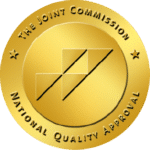Generalized anxiety disorder (GAD) is a mental health condition that affects around 6.8 million adults in the United States. GAD is characterized by persistent and excessive worry over an array of topics and can lead to physical symptoms such as difficulty sleeping, restlessness, and poor concentration. Fortunately, there are a variety of treatments available for GAD, including intensive outpatient programs (IOPs) and ketamine. IOPs involve attending structured therapy sessions several times a week, while ketamine is an anesthetic and antidepressant medication that can provide rapid relief from symptoms. By combining IOPs and ketamine, individuals with GAD can learn to manage their anxiety and live a fuller and more enjoyable life. In this article, we’ll discuss what GAD is, how IOPs and ketamine can help you, and other treatments that can be used to manage GAD.
What is Generalized Anxiety Disorder (GAD)?
GAD is one of the most common forms of anxiety. It is characterized by excessive and uncontrollable worry about a range of issues, such as money, health, work, relationships, and the future. People with GAD often feel that their worries are far beyond normal and have extreme difficulty controlling them. GAD is different from normal levels of worry. For example, when a person is worried about an important event like a job interview, this is considered normal. However, people with GAD worry excessively about everyday things, even when there is no foundation for those worries. People with GAD may also worry excessively about things that most people don’t worry about, such as if a close friend is mad at them.
Symptoms of GAD
– Insomnia or trouble sleeping: People with GAD may experience difficulty falling asleep, staying asleep, or both. They may also wake up early, feeling unrefreshed. – Restlessness: People with GAD are often restless, fidgety, and unable to “sit still.” This may prevent them from getting any meaningful rest. – Racing thoughts: GAD sufferers often have racing thoughts: their minds are racing and they have trouble focusing.
– Unease: People with GAD often experience general feelings of unease and anxiety, both physically and emotionally.
– Inability to relax: Due to their racing thoughts and feelings of unease, people with GAD have a difficult time relaxing.
– Extreme worry: People with GAD often worry about a wide range of things, and those worries seem out of proportion to the actual situation. Their worries can interfere with work, school, relationships, and a general sense of well-being.
Treatments for GAD
While not every treatment is right for everyone, there are a number of proven treatment methods that can help you manage your GAD. They include:
– Intensive outpatient programs (IOPs) – IOPs are therapy sessions that are held three times a week with a few hours between each session to allow you to go back to your normal routine. Sessions typically last between 1-2 hours and include group or individual therapy.
– Cognitive Behavioral Therapy (CBT) – CBT is a “mindfulness-based” therapy that focuses on your current thoughts, feelings, and behaviors. It encourages you to challenge your negative thoughts and beliefs — including any “cognitions” related to your GAD — and replace them with more positive and helpful ones. It also encourages you to make changes in your daily routine that can improve your quality of life and help you manage your GAD.
a. Intensive Outpatient Programs (IOPs)
IOPs are therapy sessions that are held three times a week with a few hours between each session to allow you to go back to your normal routine. Sessions typically last between 1-2 hours and include group or individual therapy. IOPs are a good option for people with GAD who need a structured program delivered by a trained professional. While it might not be the ideal option for people who are looking for a more flexible and individualized treatment, IOPs have been shown to be effective for most people.
b. Cognitive Behavioral Therapy (CBT)
CBT is a “mindfulness-based” therapy that focuses on your current thoughts, feelings, and behaviors. It encourages you to challenge your negative thoughts and beliefs — including any “cognitions” related to your GAD — and replace them with more positive and helpful ones. It also encourages you to make changes in your daily routine that can improve your quality of life and help you manage your GAD. CBT is a good option for people who prefer a more individualized treatment approach.
c. Medication
Medication is often used in conjunction with CBT to treat GAD. Medication has the advantage of being available immediately, while CBT takes several weeks or months to show results. Some commonly prescribed medications for GAD include SSRIs and SNRIs. Medications can be helpful for people who need a quick solution to their anxiety that can provide relief right away. While medication is effective for many people, it can also have some adverse side effects such as headaches or nausea, and it may need to be adjusted or discontinued over time.
d. Other Ways to Manage GAD
Although IOPs and ketamine are helpful for most people with GAD, there are also a number of other ways to manage your symptoms. These include:
– Relaxation techniques – Relaxation techniques like breathing exercises, meditation, and yoga can provide quick relief from symptoms that can be helpful when you are feeling anxious.
– Journaling – Journaling can provide a space to “let out” your negative thoughts and feelings related to your anxiety. It can be helpful to write things down in a non-judgmental way and is a good alternative for people who are not comfortable talking to a therapist.
– Mindfulness – Many people with GAD find that mindfulness is a helpful strategy for managing their symptoms.
Benefits of Combining IOPs and Ketamine
Combining IOPs and ketamine has several benefits, including:
– Increased speed of relief: Combining ketamine with IOPs can provide relief from your symptoms more quickly than with other treatments.
– Improved efficiency and effectiveness: Combining IOPs and ketamine leads to better overall GAD management and results in a shorter treatment program that requires fewer sessions.
– Fewer side effects: While medications do have side effects, ketamine has fewer side effects than some other medications prescribed for anxiety. A lower dose of ketamine may be needed than the dose required for people taking medications.
Conclusion
GAD can be a debilitating condition that interferes with everyday life. People with GAD can benefit from a combination of IOPs and ketamine, which can help reduce symptoms immediately and lead to more effective treatment. People with GAD may find that combining IOPs and ketamine provides them with a more effective and immediate treatment solution than medication alone. While medication is effective for many people, ketamine therapy’s lower cost and fewer side effects make it a good alternative for people who are seeking a non-medical treatment option.









